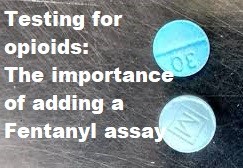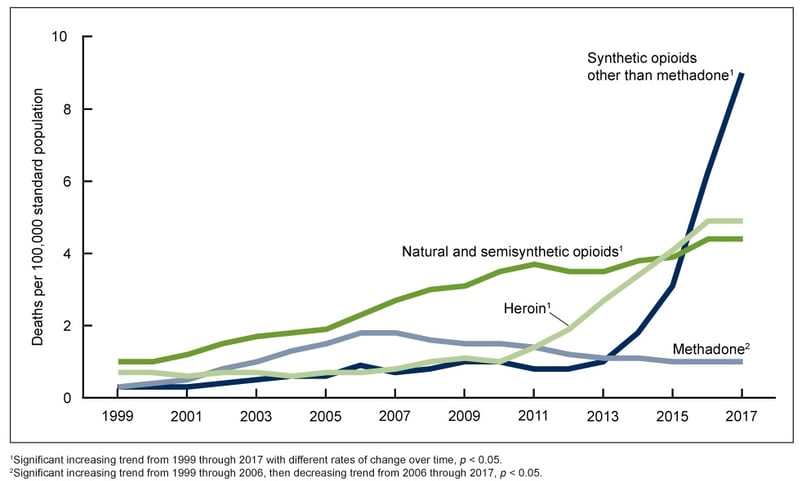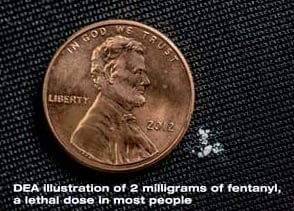Did you know that North America has the highest drug-related mortality rate in the world, accounting for one in four drug-related deaths globally? In 2017,  more than 28,000 deaths in the U.S. were attributed to synthetic opioids (other than methadone). Fentanyl (a synthetic opioid) is accountable for more deaths than any other type of opioid. A recent study found an emergence of fentanyl in Canada, Latvia, and Sweden, and in June of this year, the United Nations said that synthetic opioid use is “booming.”
more than 28,000 deaths in the U.S. were attributed to synthetic opioids (other than methadone). Fentanyl (a synthetic opioid) is accountable for more deaths than any other type of opioid. A recent study found an emergence of fentanyl in Canada, Latvia, and Sweden, and in June of this year, the United Nations said that synthetic opioid use is “booming.”
Age-Adjusted Drug Overdose Death Rates by Opioid Category: U.S. 1999-2017 (CDC)

The statistics and the reality are frightening. What’s also worrying is the fact that many labs believe they are testing for fentanyl because they are running a general drug of abuse panel with opiates included. However, fentanyl is a synthetic opiate and is not detected by running the general opioid test!
What Exactly is Fentanyl?
According to the CDC, fentanyl is a synthetic opioid 50 times more potent than heroin and 100 times more potent than morphine. There are two types of fentanyl:
Pharmaceutical
- Prescribed to manage severe pain
Non-Pharmaceutical
-
 Illicitly manufactured fentanyl (IMF) is often mixed with heroin and/or cocaine or pressed into counterfeit pills, sometimes without the user’s knowledge.Simply put, fentanyl is the most potent opioid available for use in medical treatment. It is potentially lethal, even at very low levels. Ingestion of a miniscule amount can be fatal, and its euphoric effects are indistinguishable from morphine or heroin.This illustration from the DEA shows only two milligrams of fentanyl, which would be a lethal dose for most people.
Illicitly manufactured fentanyl (IMF) is often mixed with heroin and/or cocaine or pressed into counterfeit pills, sometimes without the user’s knowledge.Simply put, fentanyl is the most potent opioid available for use in medical treatment. It is potentially lethal, even at very low levels. Ingestion of a miniscule amount can be fatal, and its euphoric effects are indistinguishable from morphine or heroin.This illustration from the DEA shows only two milligrams of fentanyl, which would be a lethal dose for most people.
Testing for Fentanyl
With so many deaths attributed to fentanyl, it surprises some that it isn’t part of the general opiate panel. A general opiate panel includes morphine, codeine, hydrocodone, and hydromorphone. It does not include synthetic opioids such as fentanyl.
A stand-alone fentanyl assay is a must for providers that offer drugs of abuse testing. Additionally, doctors must know to order a fentanyl test rather than an opiate test.
There’s a reason why the words “crisis” or “epidemic” are often paired with the word “opioid.” Federal and state governments are scrambling to meet the problem head-on; in September of this year, HHS announced more than $1.8 billion in funding to states to combat the opioid crisis by expanding access to treatment and supporting near real-time data.
Providers may ask themselves, what more can I do? One small, easy step is to make sure your lab adds a stand-alone fentanyl assay to its test offering, and be sure your providers know to order a fentanyl test in addition to testing for other opiates. To learn more about the crisis in the U.S., start here with HHS’ opioid epidemic web site.
Sekisui Diagnostic’s ARK™ Fentanyl Assay is intended for the qualitative detection of fentanyl in human urine at a cutoff concentration of 1 ng/mL. This assay provides a simple and rapid analytical screening procedure for detecting fentanyl. Because it is sensitive and specific for the detection of fentanyl, it provides confidence in the results.



Share Article